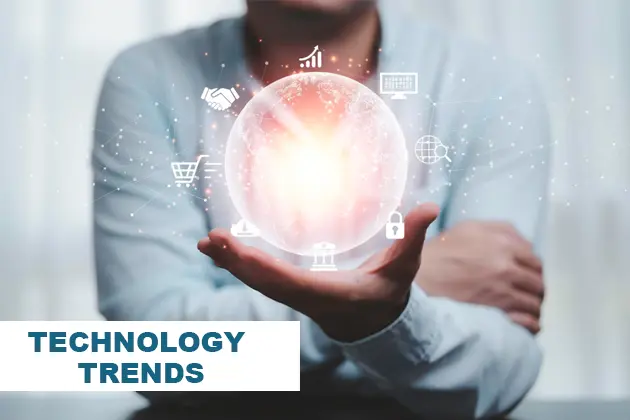We are in an era where no matter what your drivers of transformation are, they should be in perfect alignment with your company’s leadership, culture, and other operating practices. Transformation is not an overnight process; it requires continuous improvements and evolution to meet the needs of a globally fast-paced, competitive, risky, and technology-driven world. There are some arguments about digital transformation being an outdated concept, and Generation Artificial Intelligence (AI) prefers to call it AI transformation. Some prefer to view these tech-driven changes as mere business transformations or simply a transformation.
No matter what you prefer to call it, you cannot deny the contribution of technology to driving these changes for improved operations.
Today, technology lies at the foundation of innovations, propelling companies toward a greater shift. The increased demand for computing power is drawing the attention of organizational management teams and the public, facilitating experimentation that disrupts conventional operations. As companies and corporations are racing to produce and apply these advanced technologies, noteworthy shifts are occurring in the global technology landscape.
This article provides an insight into the latest technology trends that are driving digital transformation in 2025 with speed and subtlety.
Top 12 Technology Trends Accelerating Digital Transformation in 2025
New generation technologies are reshaping the business landscape as well as the technology landscape to a large extent, from artificial intelligence to cutting-edge engineering. This article presents 12 trending technology-powered transformations that are changing businesses in 2025 and will continue to do so in the coming years. Let’s have a look at them.
-
Artificial Intelligence: The Cornerstone of Modern-Day Digital Transformation
Artificial intelligence has pushed the boundaries of what’s possible, driving transformative change across lives and industries. From automating complex analyses to powering natural conservations, AI is leaving lasting impacts and driving meaningful change through many forms. Be it generative models for language, autonomous systems capable of independent decision-making and action-taking, or analytical engines for data-driven insights, AI is gradually reshaping business operations and individuals’ interactions with technology.
Among its developments, Agentic AI is a trending intelligence system capable of independent planning and execution of complex multistep tasks. These agents can autonomously execute actions, adapt to new information, and communicate with one another. In 2024, this AI-powered technology experienced $1.1 billion in equity investment.
-
Advanced Connectivity
Advanced connectivity encompasses a suite of continuously evolving technologies that enhance and expand digital communication networks. This includes wireless low-power networks, emerging 6G and 5G cellular systems, low-Earth-orbit satellites, and Wi-Fi 6 and 7 Standards. Advanced connectivity has continued to evolve across innovation metrics from 2023 to 2024, and is still growing in interest. Some of its recent developments include-
- 5G rollout created a foundation for 6G. Unlike 5G, 6G aims to enable sensing for data generation.
- The global network-slicing market is projected to reach $1.69 billion in 2025, with the advancements in 5G networks. By tailoring the individual slice to specific requirements, network slicing could help improve network efficiency and reduce waste.
- The boom of AI data centers has increased demand for fiber. From data centers to edge computing, fiber optics ensures reliable, scalable, and high-speed infrastructure with AI integration.
- Direct-to-satellite networks and non-terrestrial networks (NTNs) have become the new norm.
- Digital twins are being applied to enable intelligent and dynamic solutions for optimization, monitoring, innovation, and sustainability.
- The AI-radio access network replaces traditional CPUs, GPUs, and application-centered integrated circuits.
With advanced connectivity as the newest technology, various countries are making their way into the deployment of this technology. For example, China is leading the 5G stand-alone deployment, the third-generation partnership project is making strides in 6G development, and South Korea is moving ahead in its 6G deployment with the K-Network 2030 strategy.
-
Application-Specific Semiconductors
Application-centric semiconductors are purpose-built chips designed to execute specialized tasks. These semiconductors are engineered to address particular workloads, such as AI training and inference tasks, while offering energy efficiency, performance, and speed. Semiconductors are gaining importance in addressing specialized needs across industries, including telecommunications, automotive, and AI. Some of its recent developments include the optimization of chips exclusively for training and inference, the rise of new AI hardware vendors seeking to reduce the reliance on third-party suppliers, and more.
-
Edge and Cloud Computing
When it comes to distributing workloads across locations, cloud and edge computing are the two latest technologies driving digital transitions toward a new height of success. These two technologies are designed to distribute workloads from highly scalable remote data centers to local nodes and regional hubs. This approach enhances performance by addressing data security, latency, data transfer costs, and data sovereignty.
-
Building Digital Trust and Ensuring Cybersecurity
With digital transformation comes the rising concern for cybersecurity. In today’s digital world, our high reliance on advanced technology has removed the veil from data shared across online networks. This lures cyber criminals to invade your organizational security system by either manipulating data or impersonating. Emphasizing digital trust and ensuring cybersecurity helps organizations or individuals secure their data through robust and trustworthy digital interactions. Cybersecurity practices include identity verification, encryption, data protection, blockchain-based trust systems, and threat detection.
-
Immersive-Reality
Immersive-reality technologies are another tech trend that is determining the future of digitization. The technologies include augmented reality (AR) and virtual reality (VR). AR projects images into real-world settings, and VR enables interaction with fully virtual environments using spatial computing. Levels of interest and innovation in these technologies have been increasing in recent years. This has given birth to discoveries like AR smart glasses. For example, technology company Apple launched smart glasses with its Apple Vision Pro.
-
Quantum Technologies
Quantum-based technologies use the unique characteristics of quantum mechanics to carry out specific complex calculations faster than classical computers. They are designed to secure communication networks and produce higher sensors with higher sensitivity levels. One of the components of quantum technologies includes quantum computing, engineered to solve specific problems, such as simulating quantum phenomena in chemistry, among others. The second component is quantum communication, which secures communication, and quantum sensing is the third component of this technology that enhances sensitivity. Key tech giants, like Amazon, Google, IBM, and Microsoft, have announced the launch of quantum chips and capabilities in 2025.
-
Shaping the Future of Robotics
Enhancements in the existing robotics technology are what the future of this technology holds. In the future, robotics would be capable of performing autonomous or semi-autonomous tasks, adapting to real-life inputs with increased degrees of adroitness and autonomy. Some of these advancements include autonomous humanoid robots and mobile robots.
-
Mobilizing the Future
Mobility technologies are also standing at the frontier of digital transitions in 2025 and beyond, including electronic vehicles, urban air mobility solutions, drones, and more. The integration of advanced sensors, AI, and connectivity improves vehicle safety and efficiency. On the other hand, shared-mobility models are reimagining urban transportation. Despite challenges in regulatory frameworks, public acceptance, and infrastructure development, these technologies have transformative power to change the mobility landscape.
-
Bioengineering Technologies
Bioengineering involves the integration of technological advancements into biology. The aim is to improve human health performance, create innovative offerings, and transform food value chains. For example, gene editing, synthetic biology, and many other bioengineering technologies are revolutionizing health and human performance within the sphere of biology.
-
Energy and Sustainability Technologies
With the growing demand for electricity, a need to deploy low-emission power systems with capabilities to meet these surges in demand. For example, gas peaker plants and engines are emerging in Texas along with battery storage systems to ensure energy availability during high-demand periods. Besides that, technologies like light detection and ranging and satellite imagery have transformed the monitoring and modelling of environmental impacts with lower costs and greater precision.
-
Space Technologies
Space technologies encompass satellite systems, habitation modules, launch vehicles, and exploration missions, including direct-to-device connectivity, integrating space assets with terrestrial networks, Earth observation, and low-Earth-orbit satellite constellations.
The CEO Views has emerged as one of the most reputable business magazines with its engaging and informative content, covering a range of industry topics. With a presence in both online and offline platforms, this business publication aims to connect the dots between knowledge and industry leaders’ quest for knowledge upgradation.










